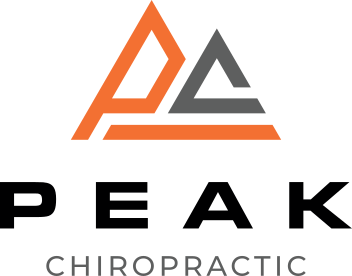If you're dealing with back pain in North Plains, you're not alone, and there are several effective techniques that can help. From targeted stretching exercises to the benefits of physical therapy, finding the right approach can greatly improve your comfort and mobility. You might also consider how ergonomic adjustments in your daily routine can contribute to long-term relief. But what about the lesser-known methods that could make a difference? Exploring these options might just lead you to the solution you've been searching for.
Understanding Back Pain Causes
Back pain often stems from a variety of causes, and understanding these can help you find effective relief. You might be surprised to learn that poor posture is one of the most common culprits. When you slouch at your desk or hunch over your phone, it puts undue stress on your spine and surrounding muscles. This can lead to discomfort that lingers throughout the day.
Another major factor could be your lifestyle choices. If you lead a sedentary life, your muscles may weaken, making them less capable of supporting your back. On the other hand, if you're physically active but don't use proper techniques—like lifting heavy objects incorrectly—you risk straining your back.
Injuries, whether from sports or accidents, can also lead to persistent pain. You might experience acute pain right away or develop chronic issues over time. Additionally, certain medical conditions, such as arthritis or herniated discs, can contribute to back pain. It's important to take into account these underlying issues when evaluating your discomfort.
Lastly, stress and emotional factors can manifest physically, leading to tension in your back muscles. When you're stressed, you may unconsciously tighten those muscles, causing pain.
Recognizing these various causes is the first step toward addressing your back pain. By identifying the root of your discomfort, you can take targeted action to alleviate your symptoms effectively.
Stretching Exercises for Relief
Finding the right stretching exercises can greatly help alleviate back pain caused by poor posture, sedentary lifestyles, or muscle tension. Incorporating these stretches into your daily routine can enhance flexibility, reduce stiffness, and promote overall back health.
Start with the cat-cow stretch. Get on your hands and knees, aligning your wrists under your shoulders and your knees under your hips. Inhale as you arch your back, dropping your belly and lifting your head (cow position). Exhale as you round your back, tucking your chin to your chest (cat position). Repeat this for 5-10 cycles.
Next, try the seated forward bend. Sit with your legs extended in front of you. Inhale and reach your arms overhead, then exhale as you hinge at your hips and reach for your toes. Hold this position for 20-30 seconds, breathing deeply.
Another effective stretch is the child's pose. Kneel on the floor, then sit back on your heels and stretch your arms forward on the ground. This pose helps release tension in your back and hips. Hold for 30 seconds while you focus on deep breathing.
Finally, don't overlook the standing quadriceps stretch. Stand on one leg, grab your opposite ankle, and pull it toward your glutes. Hold onto a wall or chair for balance if needed. This stretch not only targets the quads but also supports your lower back.
Incorporating these stretches regularly can lead to significant improvements in your back pain relief journey.
Strengthening Core Muscles
Strengthening your core muscles is essential for maintaining stability and preventing back pain.
By incorporating effective core exercises into your routine, you can enhance your overall strength and support your spine.
Importance of Core Stability
When it comes to alleviating discomfort, core stability plays an essential role in supporting your spine and overall posture. A strong core stabilizes your pelvis and spine, reducing the risk of injuries and pain. If your core muscles are weak, your body compensates by placing extra strain on your back, leading to discomfort and potential long-term issues.
Maintaining core stability helps distribute physical stress evenly across your body. This balance allows you to move more efficiently and effectively, whether you're engaging in daily activities or exercising.
Additionally, a stable core enhances your balance and coordination, which can prevent falls and injuries.
You mightn't realize it, but core stability also impacts your breathing and circulation. Proper alignment of your body facilitates better oxygen flow, which is vital for overall health and recovery.
Ultimately, prioritizing core stability can be a game-changer in your quest for back pain relief. By focusing on strengthening your core, you'll not only alleviate discomfort but also enhance your overall physical performance and quality of life.
Investing time and effort into core stability pays off in the long run.
Effective Core Exercises
Many people underestimate the power of effective core exercises in building a strong foundation for overall health. Strengthening your core isn't just about aesthetic goals; it's essential for supporting your spine and enhancing stability. Incorporating exercises like planks, bridges, and bird-dogs can make a significant difference in relieving back pain.
To start, try the plank. Position yourself face down, resting on your forearms and toes, keeping your body in a straight line. Hold this position for 20 to 30 seconds, gradually increasing the time as you get stronger.
Next, the bridge exercise can help activate your glutes and lower back. Lie on your back with your knees bent, feet flat on the floor, and lift your hips toward the ceiling, forming a straight line from your shoulders to your knees. Hold for a few seconds before lowering.
Finally, the bird-dog is excellent for coordination and balance. Start on all fours, extend one arm forward while stretching the opposite leg back. Hold for a moment, then switch sides.
Regularly practicing these core exercises won't only strengthen your muscles but also contribute to long-term relief from back pain.
Consistency and Progress Tracking
To reap the full benefits of core exercises, consistency is key. You need to make these workouts a regular part of your routine to see real improvements in your back pain. Aim for at least three sessions a week, gradually increasing the intensity as your muscles strengthen.
Tracking your progress is equally important. Keep a journal or use an app to note the exercises you complete, the number of repetitions, and how you feel afterward. This not only helps you stay accountable but also allows you to identify patterns and adjust your routine if needed.
As you progress, celebrate your achievements, no matter how small. Whether it's holding a plank longer or adding more weight to your exercises, recognizing these milestones can motivate you to remain consistent.
Physical Therapy Options
When it comes to relieving back pain, physical therapy offers effective options that can get you moving again.
You might benefit from manual therapy techniques that alleviate tension, or exercise rehabilitation programs designed to strengthen your back.
Exploring these options can lead to a significant improvement in your overall comfort and mobility.
Manual Therapy Techniques
Manual therapy techniques play an essential role in alleviating back pain and improving mobility. These hands-on approaches target muscles, joints, and connective tissues, allowing for more effective pain relief and enhanced function.
By working with a skilled therapist, you can experience significant benefits that may include:
- Manual Manipulation: This involves skilled movements of the spine and joints to restore proper alignment and reduce pain.
- Soft Tissue Mobilization: Therapists apply pressure to muscles and fascia, which helps release tension and promote blood flow.
- Joint Mobilization: Gentle movements are used to increase range of motion and reduce stiffness in affected joints.
- Myofascial Release: This technique focuses on relieving tension in the fascia, the connective tissue surrounding muscles, leading to improved flexibility and decreased discomfort.
Incorporating these manual therapy techniques into your treatment plan can lead to lasting relief from back pain.
You'll likely notice improvements in your overall mobility and quality of life. Always consult with a qualified physical therapist to determine the best approach for your specific needs.
With the right techniques, you can effectively tackle your back pain and get back to doing what you love.
Exercise Rehabilitation Programs
Exercise rehabilitation programs are an essential component of physical therapy for back pain recovery. These tailored programs help you regain strength, improve flexibility, and enhance overall function. When you participate in a structured exercise regimen, you'll not only alleviate pain but also reduce the risk of future injuries.
In these programs, your physical therapist will assess your specific condition and design a plan that suits your needs. You might engage in core strengthening exercises, stretching routines, and low-impact aerobic activities, all aimed at improving your posture and spinal alignment.
Regular participation is key—consistency guarantees you'll see lasting results. As you advance, your therapist may introduce more challenging movements to further boost your strength and endurance. It's important to listen to your body and communicate any discomfort during your sessions.
Incorporating these exercises into your daily routine can greatly enhance your recovery process. You'll feel more empowered and capable of managing your back pain.
Chiropractic Treatments
Chiropractic treatments offer a hands-on approach to relieving back pain, focusing on the spine's alignment and overall health. When you visit a chiropractor, you're not just getting a quick fix; you're receiving a thorough assessment of your musculoskeletal system. This method emphasizes natural healing and aims to restore your body's ideal function.
Here are four key techniques commonly used in chiropractic care for back pain relief:
- Spinal Manipulation: Chiropractors use their hands to apply controlled, sudden force to specific joints. This realigns the spine and can alleviate pain while improving mobility.
- Soft Tissue Therapy: This technique involves massaging the muscles and connective tissues surrounding the spine. It helps to reduce tension and enhance blood flow, promoting healing.
- Therapeutic Exercises: Your chiropractor may provide you with specific exercises tailored to your condition. These exercises strengthen the back and core muscles, supporting your spine and preventing future pain.
- Posture Correction: Chiropractors often assess your posture and provide strategies to improve it. Good posture can relieve pressure on your spine and reduce discomfort.
Acupuncture Benefits
If you're exploring various methods for back pain relief, acupuncture is a powerful option to contemplate. This ancient practice involves inserting thin needles into specific points on your body to stimulate energy flow, known as "qi." Many people find that acupuncture not only alleviates pain but also promotes overall well-being.
One of the primary benefits of acupuncture for back pain is its ability to reduce inflammation. By targeting specific acupuncture points, you can encourage your body to release natural anti-inflammatory chemicals. This can help ease discomfort and improve your mobility.
Additionally, acupuncture stimulates the release of endorphins, your body's natural painkillers, which can provide immediate relief.
You might also appreciate how acupuncture addresses muscle tension. Tight muscles can contribute to back pain, and the technique helps relax these muscles, promoting better blood flow and recovery. Many patients report feeling a deep sense of relaxation during and after sessions, which can be particularly beneficial if stress exacerbates your pain.
Moreover, acupuncture is generally safe with minimal side effects when performed by a qualified practitioner. Unlike medication, which can have unwanted effects, acupuncture focuses on holistic healing, treating both the symptoms and underlying issues.
Lastly, it's worth noting that acupuncture can complement other treatments you might be considering, such as chiropractic care or physical therapy. By incorporating acupuncture into your pain management plan, you may find a more all-encompassing approach to achieving relief and enhancing your quality of life.
Hot and Cold Therapy
Utilizing hot and cold therapy can be an effective way to manage back pain and promote healing. Each method serves a distinct purpose, and knowing when to use them can enhance your recovery.
Here's a quick guide to help you decide which therapy to apply:
- Heat Therapy: Use heat to relax and loosen tissues, improving blood flow to the affected area. This can alleviate muscle tension and stiffness. Options include heating pads, warm baths, or hot towels.
- Cold Therapy: Cold is best for reducing inflammation and numbing sharp pain. It constricts blood vessels, which can minimize swelling and discomfort. Ice packs or cold gel packs work well for this purpose.
- Timing: After an injury, apply cold therapy for the first 24 to 48 hours to control swelling. After this period, switch to heat therapy to encourage healing.
- Duration: When using either therapy, keep sessions to about 15-20 minutes. This prevents skin damage and guarantees you're getting the benefits without adverse effects.
Incorporating hot and cold therapy into your routine can greatly ease your back pain.
Experiment with both methods to see which provides you with the best relief. Remember to listen to your body and consult a healthcare professional if your pain persists.
Ergonomic Adjustments
Making ergonomic adjustments to your workspace and daily activities can greatly impact your back health. Start by evaluating your workstation. Confirm your chair provides proper lumbar support, keeping your lower back aligned with the natural curve of your spine. Your feet should rest flat on the floor or on a footrest, and your knees should be at or slightly below hip level.
Position your computer monitor at eye level to prevent straining your neck. When you sit, keep your shoulders relaxed and your elbows close to your body, forming an angle between 90 and 120 degrees. If you spend long hours typing, consider using a split keyboard or an ergonomic mouse to minimize wrist strain.
Remember to take regular breaks; standing up or stretching every 30 minutes can alleviate pressure on your back. In addition to your workspace, think about your daily activities. When lifting objects, bend at your knees, not your waist, to protect your back. Keep the object close to your body and avoid twisting while lifting.
If you're often on your feet, invest in supportive footwear to cushion your heels and arches. Finally, consider your sleeping position. A mattress that supports your spine while allowing for natural curves can make a significant difference. Using a pillow to support your neck can prevent strain during sleep.
Implementing these ergonomic adjustments will help you maintain better posture and reduce back pain, enhancing your overall comfort and productivity.
Preventive Measures
Incorporating preventive measures into your daily routine can greatly reduce the risk of back pain. By being proactive, you can maintain a healthy spine and enhance your overall well-being.
Here are four essential strategies to help you stay pain-free:
- Stay Active: Regular physical activity strengthens your back muscles and improves flexibility. Aim for at least 30 minutes of moderate exercise most days, incorporating activities like walking, swimming, or yoga.
- Practice Good Posture: Maintain proper posture when sitting, standing, or lifting. Keep your shoulders back, your feet flat on the floor, and your back straight. This simple adjustment can prevent undue stress on your spine.
- Use Supportive Furniture: Invest in ergonomic chairs and mattresses that provide proper support. Whether you're working from home or sleeping, having the right furniture can make a significant difference in your back health.
- Take Breaks: If you sit for long periods, take frequent breaks to stretch and move around. This helps alleviate tension and keeps your muscles engaged, reducing the likelihood of experiencing pain.
Conclusion
Incorporating these techniques into your routine can greatly improve your back pain relief journey. Whether you choose stretching exercises, physical therapy, or ergonomic adjustments, you're taking proactive steps towards a healthier back. Remember, consistency is key, and seeking professional guidance can enhance your results. By prioritizing your well-being and making these changes, you'll not only find relief but also prevent future discomfort. Start today, and embrace a more pain-free lifestyle in North Plains!



